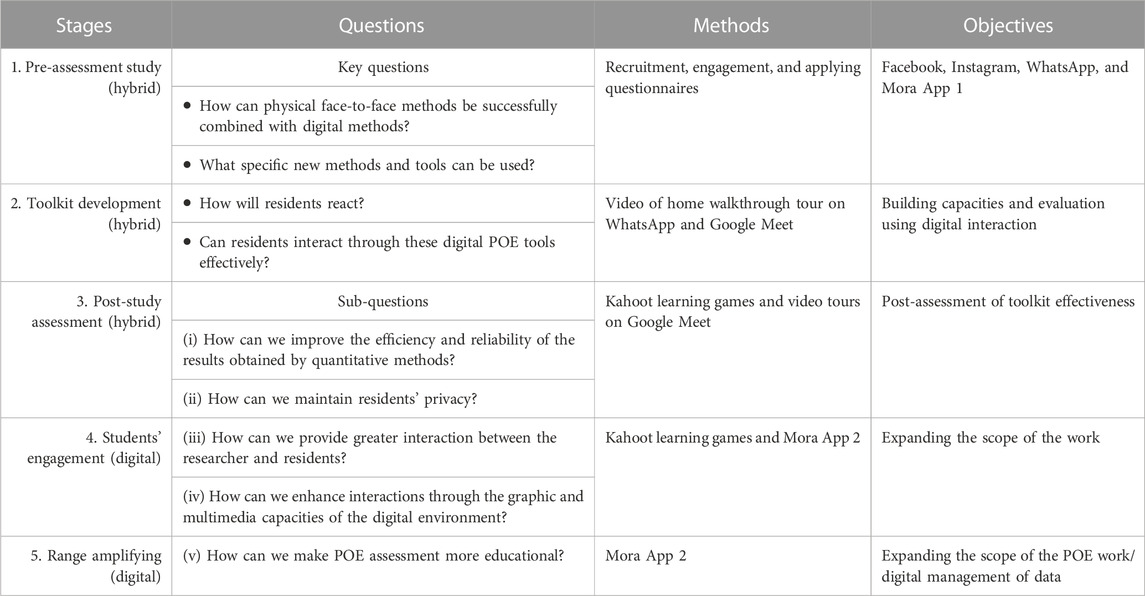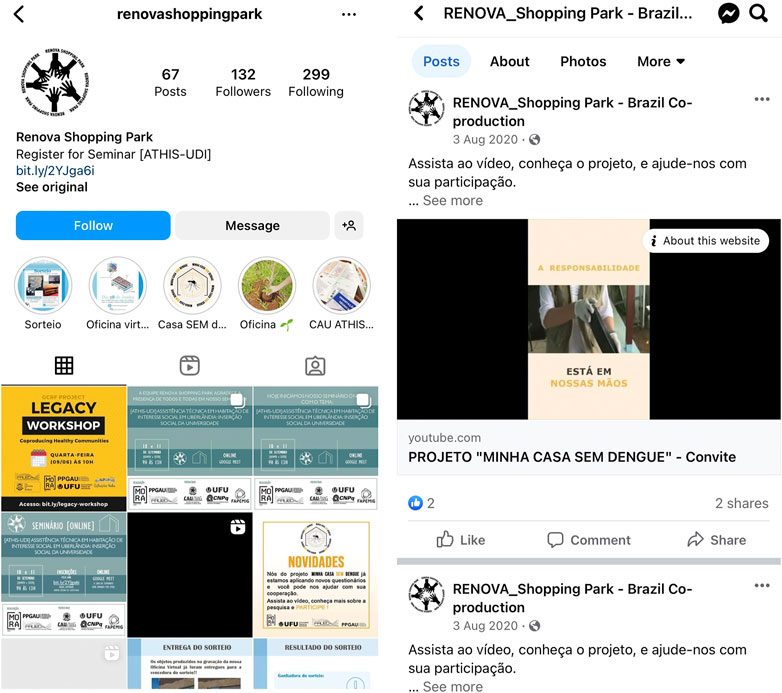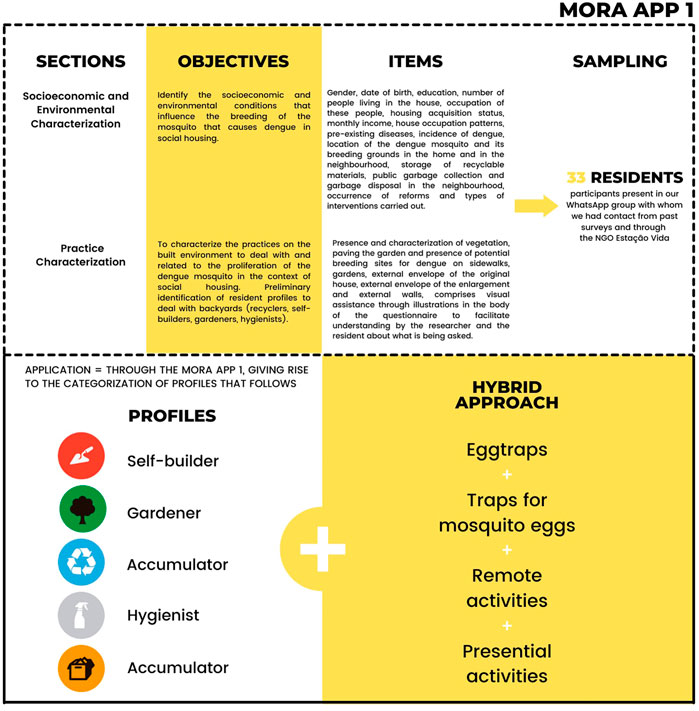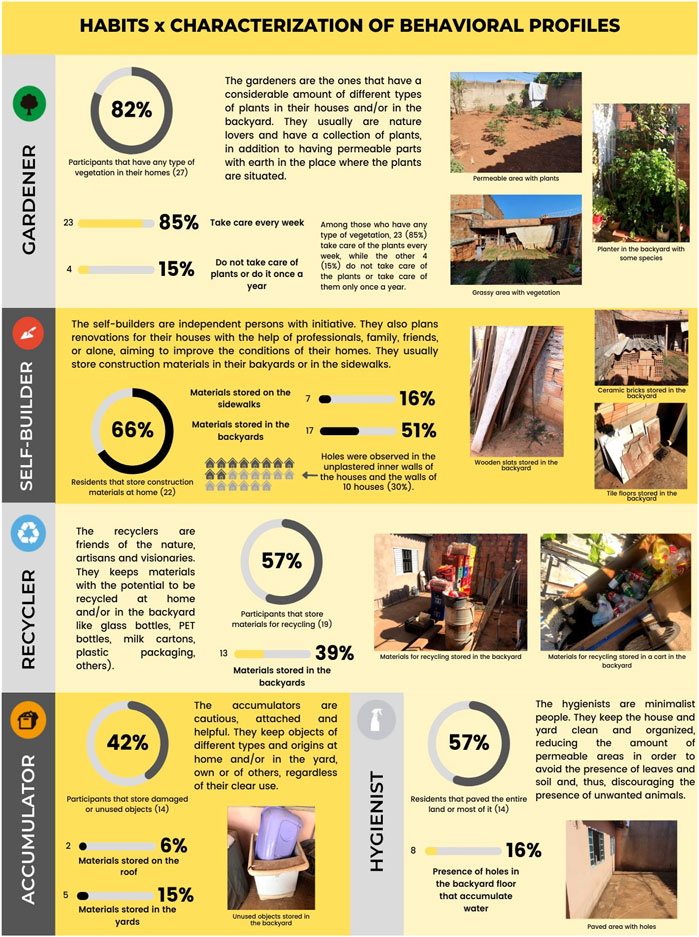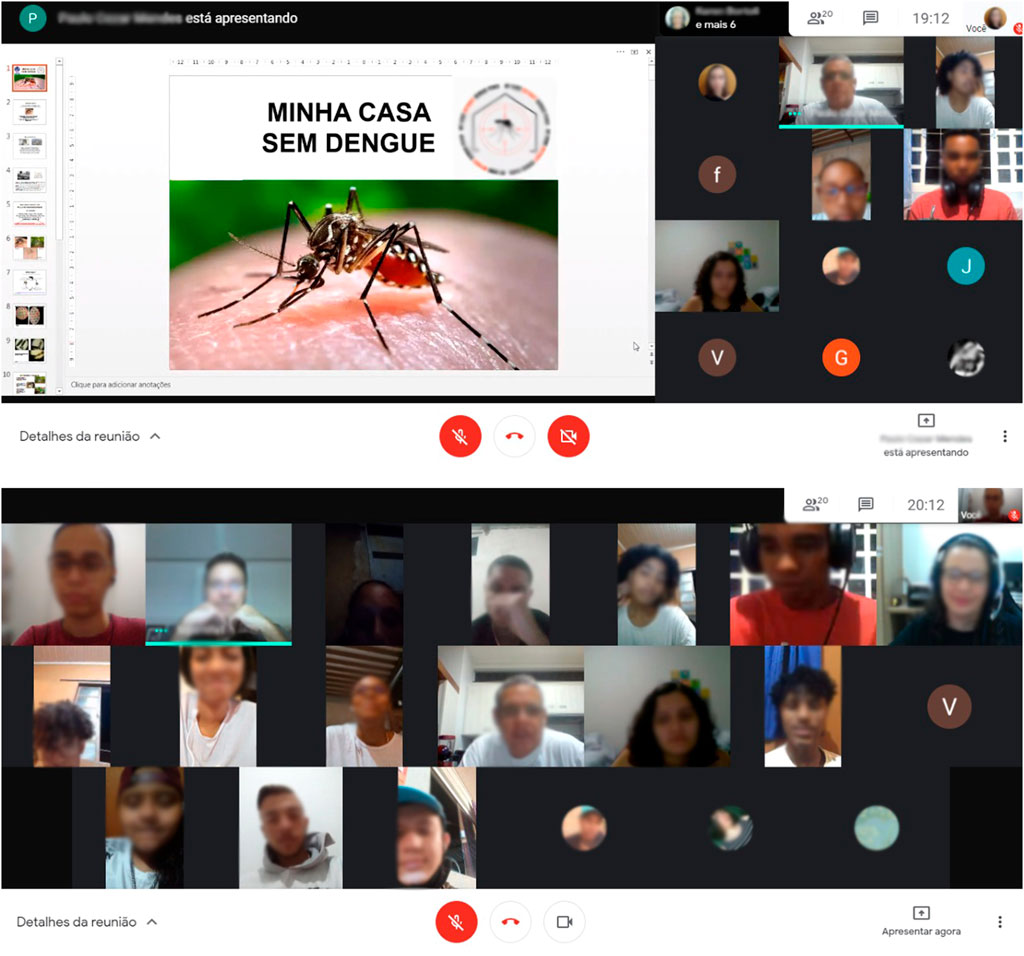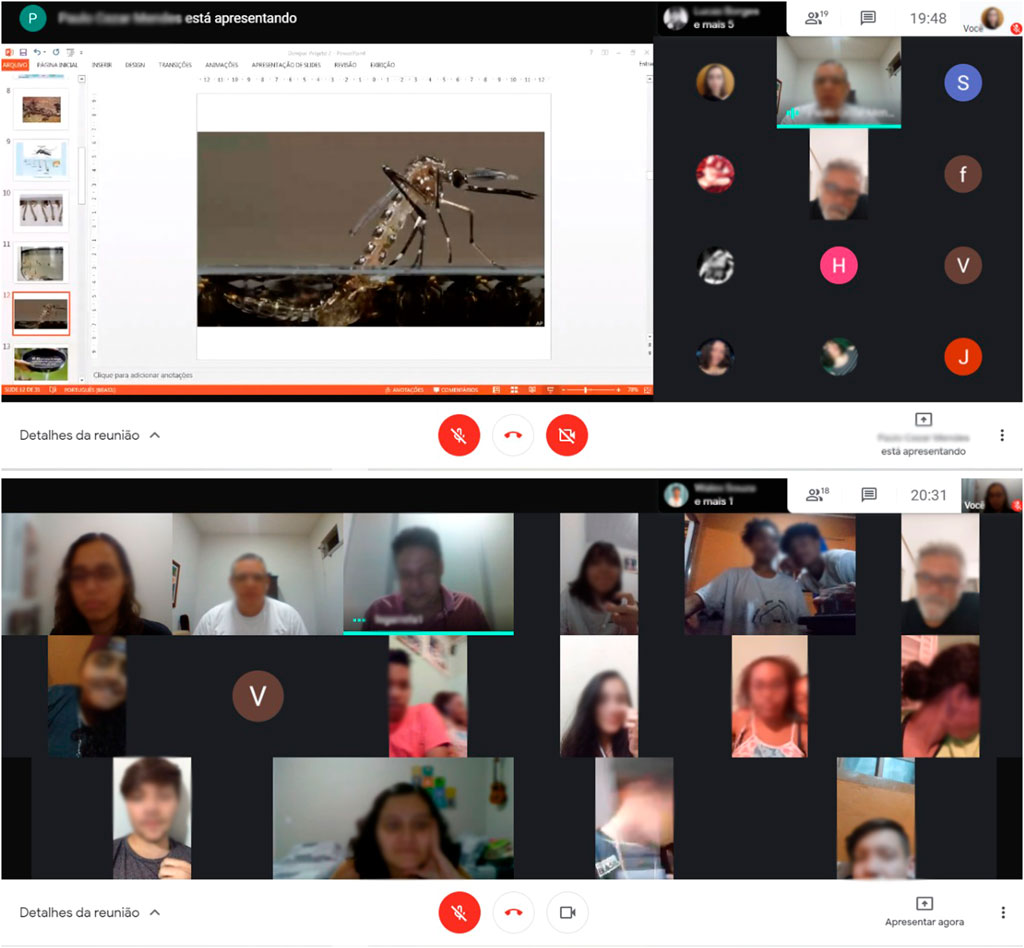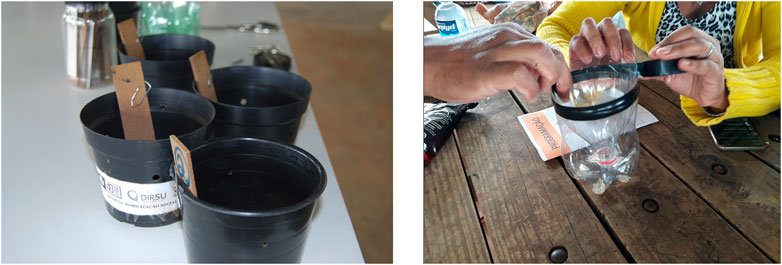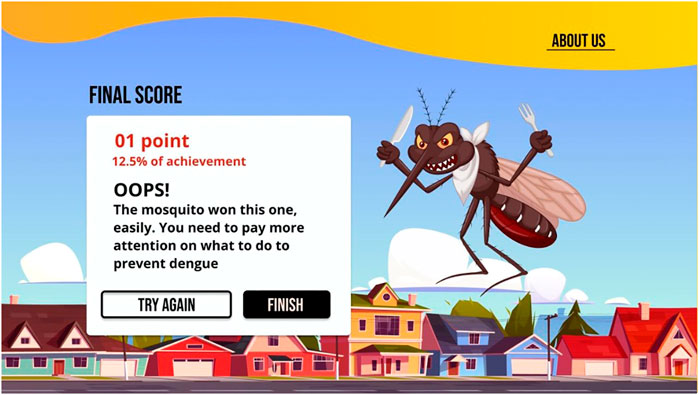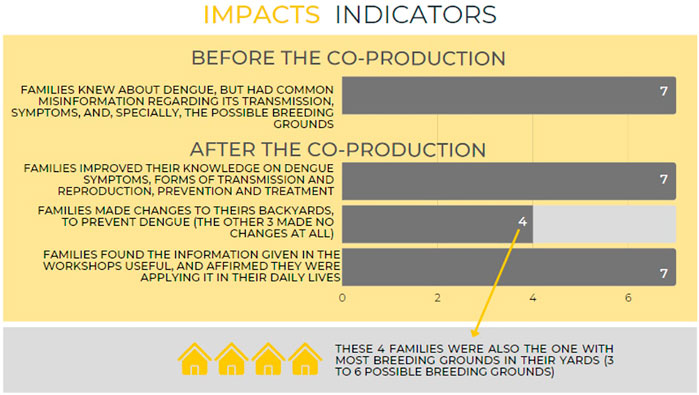Innovating digital POE platforms during the COVID-19 pandemic: A case study of co-production in Brazilian social housing
- 1Mora Housing Research, Faculty of Architecture and Urbanism and Design, Federal University of Uberlândia, Uberlândia, Brazil
- 2Retired, Dundee, Scotland
- 3Institute of Geography, Federal University of Uberlândia, Uberlândia, Brazil
- 4Faculty of Architecture and Urbanism and Design, Federal University of Uberlândia, Uberlândia, Brazil
This paper deals with digital POE methods focusing on their reached potential in facilitating the face-to-face experiments demanded by the project. Recognized as a set of methods and instruments applied in environments during use, Post-Occupancy Evaluation (POE) can help manage the project process, providing diagnoses and recommendations that feed new projects and interventions in environments in use. POE approaches have been continually restructured in the face of new environmental, social, economic and especially technological demands. In early 2020, the Covid-19 pandemic, lockdowns and quarantines made it challenging to continue to apply traditional face-to-face POE-based tools and techniques. Simultaneously, the MORA Housing Research Group was carrying out a research project in the city of Uberlândia (Brazil) focusing on the understanding of the relationship between the incidence of arboviruses in the case study social housing neighbourhood, the occupants’ practices, and the built environment management, through POE. The social distancing measures applied during the Covid-19 pandemic led the research team to transform methods from face-to-face to hybrid ones, comprising digital and physical approaches to co-produce durable solutions against dengue. The work comprises a five stage method using on-shelf digital platforms and designing other 2 specifically for the project’s purposes. By introducing the digital/physical hybrid POE format, the use of social networks and messaging applications significantly reduced the number of necessary visits by researchers to the neighbourhood from 20 to 5 in the first stage of the work, saving a lot of time and effort. The new tools were easy to use for all users. Users reported finding it pleasant to participate in activities with digitally remote researchers. The findings from this project indicate that the incorporation of new digital tools to facilitate physical POE research as a novel hybrid approach provides a successful alternative approach to standard POE processes that are based on face-to-face participation.
1 Introduction
Post-occupancy evaluation (POE) can help improve design and building maintenance and operation processes by providing analysis, recommendations, and effective interventions in built environment projects. POE, as part of a building performance evaluation (BPE) expert analysis process, considers users’ expectations and satisfaction once a building is occupied. Traditional POE methods in BPE include paper-based questionnaires, interviews, focus groups, and performing building walkthroughs. However, new digital platforms and the wide use of mobile phones in recent years have created new possibilities. Drawing on the innovative development of digital interfaces for POE over the last 7 years by the authors, this article demonstrates how the COVID-19 pandemic provided new opportunities to re-develop and deploy such methods in a successful and novel hybrid POE approach. From 2020 to 2021, innovative POE methods were developed as part of a case study of 33 houses in a Brazilian social housing development.
In early 2020, the COVID-19 pandemic lockdowns made it challenging to continue to apply traditional face-to-face POE-based tools and techniques. The MORA Housing Research Group carried out a research project in the city of Uberlândia, studying the relationships between arbovirus incidences in a case study social housing neighborhood, occupants’ practices, and built environment management1. Previous studies suggested that in social housing communities, backyards were major Aedes aegypti breeding grounds, transmitting dengue, Zika, and chikungunya diseases (Causa et al., 2020; Zerbo et al., 2020; Ngugi et al., 2020; Paradkar et al., 2021).
In 2019, the arboviruses affected 1.4 million people in Brazil, killed 419, and debilitated patients for up to 7 days, leading to an estimated loss of 9.8 million workdays (Ministério Da Saúde, 2019). The POE methodology used before COVID-19 comprised face-to-face occupant workshops, co-production exercises, walkthroughs, and questionnaires. The COVID-19 pandemic, however, imposed restrictions on the access of health agents in homes and on the search for care in health facilities, allowing the perpetuation of breeding grounds and the emergence of more serious manifestations of the disease (Dantés et al., 2020).
The social distancing measures posed an opportunity for the research team to transform and combine face-to-face methods with digital methods, developing a new hybrid POE approach based on the following four key research method questions:
• How can physical face-to-face methods be successfully combined with digital methods?
• What specific new methods and tools can be used?
• How will residents react?
• Can residents interact through these digital POE tools effectively?
This study presents the hybrid POE methodology developed to combat dengue in a Brazilian social housing development in the city of Uberlândia known as Shopping Park. It demonstrates the digital methods developed and their success in facilitating the face-to-face POE experiments demanded by the project. This paper consists of 10 parts. Following the introduction, Section 2 presents a state-of-the-art review of the field, and Section 3 demonstrates the innovative hybrid approach and development of the new hybrid digital/physical approach to POE, along with the methods developed. Section 4 then presents the results of the fieldwork, followed by Section 5, which discusses all these aspects, showing how the existing POE approach has been enhanced, leading to a more effective process for general use. Section 6 summarizes the overall contribution of the research to the wider discourse.
2 State-of-the-art evaluation and digital interfaces
POE as a tool for understanding housing quality has been a growing theme in international research, notably guided by global and local sustainable development agendas (Villa and Ornstein, 2013; Joana Carla Soares Goncalves Klaus Bode organizadores, 2015; Stevenson, 2019; Baker and Steemers, 2019). It assesses environmental qualities, since the physical aspects of housing have multiple influences on the daily lives of residents, affecting their quality of life, expectations, and possibilities for future development (Regodon et al., 2021; Van der Voordt, 2021). The management of POE processes and their role in improving the design and quality of built spaces, especially in housing, has been extensively researched (Villa, 2008; Van der Voordt and Van Wegen, 2013; Stevenson and Baborksa-Narozny, 2018). These studies highlight the need for hybrid approaches to POE that examine the relationship between the measurement of human behavior in the domestic space and housing environmental qualities to raise satisfaction rates and the performance of projects. These include techniques for analyzing the physical perception of the built environment in addition to the interaction between this environment and the behavior of users (Stevenson and Leaman, 2010; Mallory-Hill et al., 2012).
Recent digital POE research has explored the use of social media via closed Facebook groups in relation to collective learning about home use in the United Kingdom. Data were collected through the longitudinal digital and physical analysis of two case study residential developments and their Facebook group sites for occupants (Baborska-Narozny et al., 2017). This demonstrated that when POE evaluations are digitally fed back and discussed by occupants, alongside designers, developers, and managers, it helps them improve their practices.
Broader evaluation processes in the area of architecture and urbanism have increasingly appropriated new information, communication, and interface technologies to achieve their goals, becoming more efficient, educational, and collaborative (Regodon et al., 2021; Abel Mangueira et al., 2019; Villa and Ornstein, 2021). POE approaches have been continually restructured in the face of new environmental, social, economic, and technological demands. Starting from face-to-face traditional paper questionnaires and focus groups, there has been an expansion and improvement of POE methodologies through digital interfaces, facilitated by the dissemination of cellular phones connected to the internet (Villa et al., 2020; Bourikas et al., 2020). Through interdisciplinary approaches and the adoption of different methods of data collection and visualization, such improvements aim to make POE processes more efficient, educational, and collaborative (Villa and Ornstein, 2021).
Recent research explores how digital interventions can limit or help the collaborative design process in the context of high-density mass housing. They also discuss how gamification acts as a form of decision support within a larger framework model for a user-oriented digital design system (Lo et al., 2017).
Further research develops post-occupancy assessment using photographs taken via smartphones. These provide significant explanatory power and contextual insights for quantitative results, albeit with significant post-processing effort and a reduced sample size (O’Brien et al., 2019).
Technology has been expanding in the home through the development of digital interfaces and greater interaction between humans and machines, educational processes, and user information in the home, reinforcing new agendas in relation to the application of POE as a process (Coates et al., 2012). Using human–computer interaction (HCI) helps the user better understand the housing designer’s logic and can provide a more creative, effective, and productive use of the domestic spaces (Preece et al., 2005).
Furthermore, user experience design (UX design) and user interface design (UI design) can help the POE communication interface evaluate the user’s behavior and needs, ensuring a positive, playful, and interactive experience for users (Ambrose and Harris, 2012).
Innovative embedded technology offers a further understanding of the use of homes by covering more topics and creating a more dynamic POE process (Bourikas et al., 2020) involving the environment, residents, and various sensors present, both in smart homes and the house. This type of POE research has tested new communication and information technologies such as sensors and information from global positioning systems (GPSs) and drones (Li et al., 2018; Manju et al., 2021).
New electronic platforms aimed at optimizing the post-occupancy evaluation process include systems that show user classes and characteristics, software architecture, functionality, the coding language used, and external interfaces, which can increase the power of POE analysis (Afolabi et al., 2020).
A recent POE study during the COVID-19 pandemic used remote digital POE analysis to understand and improve the use of co-living spaces located in Madrid, Spain. The research demonstrates the benefits of implementing the analysis of digital trail data collected from embedded IT systems, such as smart locks, Wi-Fi networks, and electrical consumption devices, through a case study (Regodon et al., 2021).
This state-of-the-art review shows that while important advances exist in POE in the use of technology for methodological improvement, there is a distinct lack of research into developing digital POE methods that facilitate physical experiments, co-produced by home squatters to help improve their own living conditions, which this study covers.
The research demonstrated in this paper aims to fill this gap and develop a unique hybrid digital/physical POE approach with improved methods using digital equipment and collaborative digital/physical hybrid interfaces. Within this approach, the research also addresses the following specific sub-questions related to the four main research questions raised in the introduction:
(i) How can we improve the efficiency and reliability of the results obtained by quantitative methods?
(ii) How can we maintain residents’ privacy?
(iii) How can we provide greater interaction between the researcher and residents?
(iv) How can we enhance interactions through the graphic and multimedia capacities of the digital environment?
(v) How can we make POE assessment more educational (Villa et al., 2020)?
3 Methodology
The Shopping Park neighborhood in the city of Uberlândia (Minas Gerais district) was the first social housing development of the government program “Minha Casa, Minha Vida.” The program was launched between 2010 and 2011, comprising more than 3,600 horizontal semi-detached houses. The original case study research on this neighborhood (Villa et al., 2017; Villa et al., 2022) aimed to understand the relationship between the socioeconomic conditions and practices of social housing residents with certain aspects of the management of the built environment that could lead to a greater risk of dengue proliferation. It started from the premise that an understanding of home management practices would develop socially durable solutions to eliminate the dengue vector in social housing. Based on practice theory (Gram-Hanssen, 2010; Stevenson and Rijal, 2010; Frances and Stevenson, 2019), a unique toolkit of POE mixed methods was then proposed as a second phase in the case study, combining a new hybrid digital and face-to-face approach, which is described next. The methodology comprised the initial development of the second phase project over three stages and two later stages to expand the project’s outreach. Within the hybrid POE format of the overall project, this article focuses specifically on the digital POE methods developed (Table 1) while highlighting the innovation of the hybrid approach.
3.1 Stage 1—pre-assessment study
This preparative stage comprised the selection of residents, their assimilation of objectives, and digital occupant questionnaires. The researchers used social media platforms and a previously developed friendly web-based digital interface for the creation, application, and organization of a database and the analysis of questionnaires (Mora App 1; https://systemapodigital.wixsite.com/english).
Given the widespread use of mobile phones by 98% of residents (Gomes, 2019), the socio-physical conditions of the community were studied, and residents were engaged using several digital platforms, as follows:
a) Facebook and Instagram: Existing strong social networks were used to publicize the study, seeking to expand the community’s knowledge of the actions developed. The existing Renova Shopping Park Facebook and Instagram profiles were used, which had been used by the group since 2015 in several other projects in the same community. These had the advantage of being well known by the residents.
b) WhatsApp: This application was an important innovative POE communication and engagement tool developed and disseminated through social networks with the help of the NGO Estação Vida. It reached 60 participating residents.
c) Mora App 1: This was previously developed by Grupo MORA for the application, tabulation, and analysis of questionnaires through a friendly and gamified digital platform. The app enabled the application of questionnaires remotely with its easy-to-use interface, the creation of a database, and the digital treatment of information. Thirty-three questionnaires were completed.
Using the aforementioned three tools, the group was able to carry out a fully digitalized socio-technical analysis of the community, remotely identifying the social practices and physical and spatial conditions for the proliferation of A. aegypti.
3.2 Stage 2—POE toolkit development
The toolkit comprised several co-production exercises with occupants, using digital home walkthroughs and interactive guided video calls between residents and the team. These video calls facilitated three different physical exercises reinforcing participants’ knowledge and engagement in relation to tackling dengue: 1) a guided interactive walkthrough in the search of mosquito breeding grounds (mosquito hunting), 2) egg trap installation and management, and 3) backyard inventory and healthy storage solutions.
Seven families participated directly in the research activities, in addition to three non-participating families that were monitored as a control study. Four face-to-face workshops and eight remote digital activities were conducted. The four face-to-face workshops consisted of exercises that took place in the community NGO, through which the team explored residents’ knowledge about the incidence of the disease and the importance of residents’ practices in the emergence of mosquito breeding sites. Each workshop had different exercises, with the residents’ knowledge being expanded with each exercise in a particular sequence. In the first workshop, basic knowledge was tested on the forms of transmission of the disease and their relations with the built environment; in the second workshop, the exercises explored the residents’ practices in their backyards, the characterization of different residents’ profiles, and how each practice contributed to the establishment of mosquito breeding grounds. The third and fourth workshops enabled residents to apply their new knowledge in practice, using their training to identify and eliminate mosquito outbreaks. Residents were then encouraged to replicate the knowledge in their neighbors’ homes, expanding the scope of the toolkit.
The eight novel digital exercises are aimed at making the dengue prevention solutions last for a long time and expanding the methods to other residents and students. The evolution of actions by residents was followed through guided video walkthroughs, in which residents presented videos and photos of their backyards showing the new practices they had adopted. Videos and photos taken by residents were then sent to the research team through WhatsApp, alongside real-time POE exercises facilitated by Google Meet. These new digital activities allowed for a broad exchange of information between residents and researchers. Residents recorded home videos, photos, or interacted in real-time with the researchers while undertaking walkthroughs, mosquito hunting, characterization of their own backyards, and developing solutions themselves in addition to receiving information and observations from the researchers.
3.3 Stage 3—post-study assessment
This stage evaluated the toolkit’s effectiveness in terms of assertiveness and permanence over time. It was conducted 6 months after the exercises in stage 2, involving the same households. The hybrid approach combined face-to-face activities, such as physically collecting the egg traps with a digital evaluation, monitoring the conditions of the backyards in terms of possible mosquito breeding sites, and the installation of egg traps by the residents, all of which were assisted through home videos and the assessment of knowledge about dengue causes and how to avoid them. The Kahoot digital platform (https://kahoot.com/) was used, with the exercises again being carried out remotely by researchers and residents through Google Meet.
3.4 Stage 4—student engagement
Next, the team expanded the study to a younger age group to increase the diversity of responses. After studying a digital booklet prepared by the researchers, 250 students from the biology class at a neighborhood school were invited through Google Meet to participate in digital exercises. A competition was conducted using the Kahoot platform in remote meetings with the researchers.
3.5 Stage 5—range amplifying
The results of the first four stages contributed to the development of a web-based application (Mora App 2; http://minhacasasemdengue.com.br/) that synthesized the toolkit and school booklet, which could then be made available to other communities in different socioeconomic and climatic scenarios. This app also provided vital feedback to the main MORA POE database for future research. The publicly accessible online app also allowed on-demand configuration based on the analysis of the results by the researchers. Work data and methods are kept accessible through interactive tools and a summary of the work carried out to date. This enables the project to be replicated elsewhere with continuous monitoring of the information in the database.
4 Results
4.1 Social networking and survey results
The research team used the Renova Shopping Park Facebook and Instagram accounts, which were already used in other projects by the team. The 137 followers generated 211 views of the video project announcement (Figure 1). From the interaction on these networks, the contacts were added to a specific WhatsApp group for the project, with 60 residents participating. WhatsApp made more direct communication with the participants possible and was used in all phases of the project.
By introducing the digital/physical hybrid POE format, the use of social networks and messaging applications significantly reduced the number of necessary visits by researchers to the neighborhood from 20 to 5 in the first stage of the work, saving a lot of time and effort.
After the initial communication process through social networks, residents were contacted via WhatsApp and invited to participate in stage 1 of the project. In this phase, the researchers used a survey to interrelate the practices of the residents with their physical configuration and use of their backyards. A total of 60 residents agreed to participate and received a remote link to access the Mora App 1 game, which was carefully configured with specific questions to be addressed in the survey. The application, which had already been tested in previous research, had a friendly interface that made it fun for residents to answer the proposed questions while allowing researchers to quickly format and analyze data. The Mora App 1 could be used on a cell phone, e-tablet, or computer, offering greater flexibility of access. A total of 33 residents out of 60 responded to the questionnaire (over 50%), which is a high response rate. Given that survey questionnaires, which typically only achieved a 15% response rate, were answered directly, another 14 needed digital equipment support from researchers who provided e-tablets and chips for internet access (Figure 2).
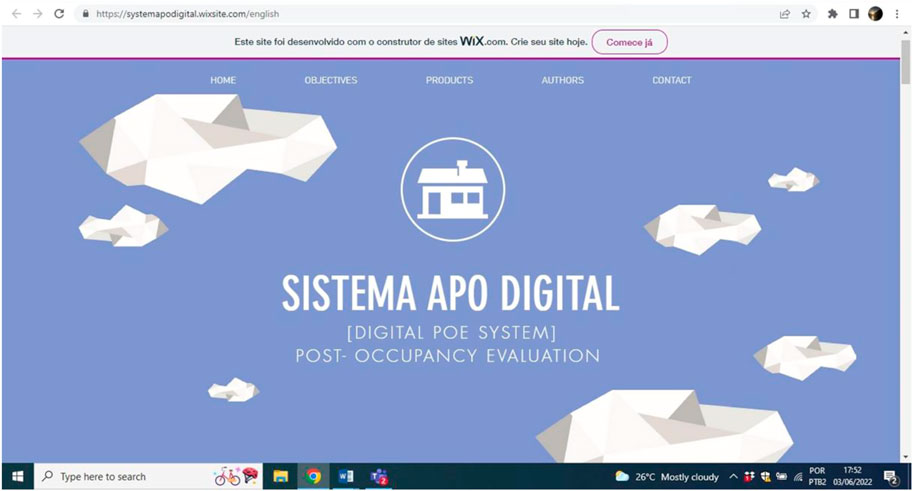
FIGURE 2. Mora App 1—https://systemapodigital.wixsite.com/english.
4.2 Survey archetypes
The MORA quantitative–qualitative survey had 81 questions divided into two sections. The first Socioeconomic Characterization section collected information on gender, date of birth, education, number of people living in the house, their occupation, housing acquisition status, monthly income, house occupation patterns, pre-existing diseases, the incidence of dengue, location of the dengue mosquito and its breeding grounds in the home and the neighborhood, storage of recyclable materials, public garbage collection and disposal in the community, occurrence of reforms, and types of interventions carried out. It consisted of a series of multiple-choice questions with non-standard indexes varying for each question.
The second Environmental and Practice Characterization section examined the presence and characterization of vegetation, garden paving, and the presence of potential breeding sites for dengue in the sidewalks, gardens, external envelope of the original house, external envelope of any extension, and the external walls of the house itself. Visual assistance was provided through illustrations in the questionnaire to facilitate understanding by the researcher and the resident about what was being asked. These questions highlighted the relevant knowledge and habits of residents and revealed how and if this knowledge translated into occupant practices to combat dengue in the built environment. Figure 3 summarizes this step.
Based on the information obtained from 33 resident responses, it was possible to categorize the residents’ behaviors into four main occupant archetypes, as listed:
Accumulator/recycler: These people tend to store objects of various backgrounds and types in their homes, whether for themselves or others, with or without a clear purpose. They also accumulate materials with the potential to be recycled, such as PET and glass bottles and plastic packaging. These objects/materials were often found stored inappropriately, either due to a lack of disposal options or adequate storage space indoors. This created microenvironments that were difficult to control and extremely conducive to water accumulation, which led to mosquito breeding.
Self-builder: These residents sought to carry out renovations in their homes, either with the help of professionals, families, and friends or on their own, with the aim of improving the conditions of their housing. They usually stored building materials in their backyards, such as sand, gravel, ceramic floors, masonry blocks, and tiles. In most cases, these materials were exposed to rain, wind, sunlight, and dust in the backyards. The improper storage of these materials impaired their quality and durability and allowed the accumulation of water during rainstorms, making them potential breeding sites for the mosquito.
Hygienist: These people kept their houses and backyards very clean and well organized, often through waterproofing the land by paving it over. This cleaning action, carried out by the residents in order to improve their homes and avoid the presence of unwanted earth, leaves, and animals, often resulted in the increase of impermeable areas in these dwellings, which enabled the creation of ripples and holes in the paving in which water accumulated, again creating mosquito breeding grounds.
Gardener: These residents had a considerable number of plants in their homes and/or backyards. They often plant them in pots which, when not properly cared for, can accumulate water and preserve it long enough for mosquito breeding to occur. Given the large amount of vegetation present in gardeners’ backyards, the usual care with plants needs to be even more rigorous to avoid the breeding of the mosquito.
The results show a predominance of gardeners and self-builders (Figure 4), followed by accumulators/recyclers and, finally, hygienists. Each archetype followed different practices conducive to the promotion of mosquito breeding grounds. In stages 2 and 3 of the research, post-study assessment, and student engagement, we developed methods for intervening and promoting lasting changes in relation to these defined archetypes.
4.3 Knowledge and perception of dengue conditions
The More App 1 results highlighted the incompatibility between current home management practices and the effective fight against dengue in homes. Overall, 50% of the participants had had dengue at least once. At the same time, 84.8% stated that there was no mosquito breeding in their homes before interventions. The proliferation of the mosquito was often mistakenly attributed by participants solely to the backyards of their neighbors, which were full of garbage or rubble or simply abandoned with high bush levels. The problem was made worse because the mosquitoes traveled throughout the neighborhood, as a potential vector of dengue and other arboviruses, within a 500-m radius.
However, 97% of the interviewees had made important changes in their own house or backyard involving construction, demolition, and the generation of debris that created potential mosquito breeding grounds. Only 20% had received professional help, while the rest made changes on their own initiative. However, 54% had not yet completed planned changes, and 32% said they had construction materials at home awaiting use opportunities—this was concerning, given the potential for increasing mosquito breeding grounds through these actions.
In stages 2 and 3, it was found that the seven most engaged families had only intermediate knowledge of dengue, with four out of the seven families unsure about how dengue contamination occurred, while four families were not sure about how the mosquito reproduces. Six out of the seven families kept building materials at home for future renovations, four in an uncovered yard and two in a covered area of the yard. From the virtual walkthroughs conducted by researchers in the participants’ homes, the presence of several risk situations for mosquito proliferation was also observed in these seven houses (as illustrated in Figures 5–7).

FIGURE 5. Risk situations for mosquito proliferation: exposed beverage crates and bottles, abandoned toys, exposed plant stands, and building materials.
From the stage 4 online workshops with students (Figures 8, 9), it was found that the level of knowledge of the participants about dengue (transmitter, transmission, symptoms, reproduction, treatment, and prevention) was also only intermediate. At the same time, more than 66% of students reported seeing stored building materials or materials to recycle in their homes, either in the covered yard or indoors organized.
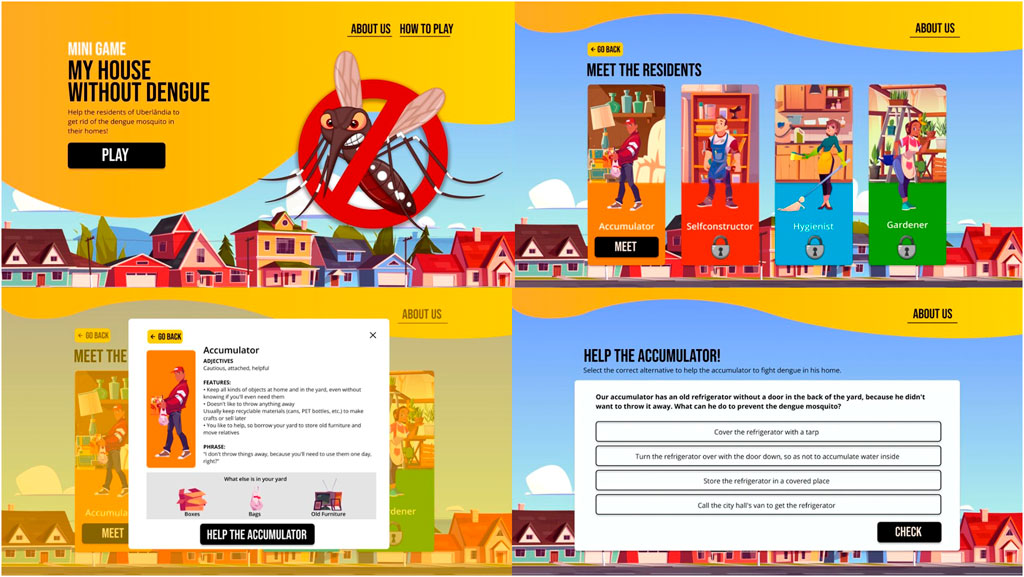
FIGURE 9. From left to right and up to down: initial screen; “meet the residents” screen; character presentation example screen; and question example screen.
The houses were also physically monitored for mosquito breeding grounds by the researchers, who used traps for mosquito eggs that were produced using a container half-filled with water and a smooth wooden board partially immersed in the liquid (Figure 10). Simultaneously, the residents themselves were instructed on how to make traps for adult mosquitoes using a PET bottle and a permeable tulle-like fabric (Figure 11). Some residents were surprised by the results of the weekly counting of eggs and trapped mosquitoes, evidencing the effects of the household mismanagement practices previously discussed. It showed them that the problem actually existed in their own homes and provided a valuable occupant learning exercise.
From the results of the methods and the researchers’ perceptions regarding the workshops’ sessions (both physical and online), an important new research tool was designed in order to help replicate the discoveries and toolkit solutions in other similar contexts using gamification.
4.4 Resident education
In Stage 5, the researchers created a new web-based game built on Mora App 2 (http://minhacasasemdengue.com.br/). Mora App 2 aimed to further increase resident awareness of the dengue problem in relation to the built environment by using examples of real and everyday situations from the local context for the four occupant archetypes identified (self-builder, hygienist, accumulator/recycler, and gardener). The Mora App 2 web page was again designed to work with mobile phones, given how few residents had computers. The participant was asked key sociodemographic questions, which were immediately analyzed to reveal their occupant archetype. They were then invited to help representative characters of each behavioral archetype avoid the proliferation of the dengue mosquito in their homes during a mini-game.
The user was also encouraged to choose a character to help them, whose behavioral archetype was presented to them with its main characteristics described. The user was presented with statements containing problems to be solved, and four possible alternatives for each of the occupant archetypes were then presented. An explanation was then offered to inform the participant about their mistake or success and the reasons why. After solving the problems associated with each archetype, the participant had to answer which practices were similar to their own at home and were then asked whether or not they identified the occupant archetype associated with those particular practices. After answering the questions for all four archetypes, the participant was asked whether they had learned something new about dengue or not. They were then given access to a screen where they could check their successes, start the mini-game to improve their performance, or finish the process. Figures 9, 10 show the initial screen of Mora App 2 and a possible path of evaluation through the selection of a practice profile. This app was only tested for its usability in phase 2 of the project and will be reported on in a future publication. It is designed to spread the toolkit to a broader range of regions and climate zones within Brazil.
5 Discussion
5.1 Digital methods can change practice
In stage 1,—the pre-assessment study, creating a lasting change in practices required a great effort to understand what motivates and defines practices. Therefore, practice theory (Schatzki et al., 2001) was used to understand everyday practices in their broader context. It allows access to deeper aspects of the interaction between people and between people and the environment in which they live. The theory, as further developed by Gram-Hanssen (2010), includes several elements for the explanation, composition, and understanding of practices.
• Institutionalized and explicit rules refer to institutional policies and regulations, written instructions, or any knowledge that influences knowledge about certain practices.
• Capabilities (know-how) and habits include the skills and abilities (know-how) that practitioners have or have acquired in terms of how to conduct certain practices, referring to acting/doing.
• Engagement refers to the symbolic meaning, social expectations, inspirations, objectives, and beliefs that guide attitudes and practices.
• Things refer to the characteristics of the objects in the built environment and the way they condition attitudes and practices.
The research aimed to understand how each of these elements of practice and its relationship with social and environmental aspects affect the management of the built environment in social housing. From the researchers’ previous observations of the housing practices that most favor dengue proliferation in the case study (Garrefa et al., 2021a; Garrefa et al., 2021b; Villa et al., 2017), some categories of practice analysis were proposed, namely, periodic maintenance in the house and its subsystems, cleaning of the houses (lot + sidewalk + unit), the destination of solid waste, and an effective fight against dengue.
The categorization of these four occupant archetypes based on practice theory and observation, revealed a pattern of relationships between the individual and the management of the built environment in their homes, providing an important and reliable understanding of individual practices and reflections on their impacts on the proliferation of dengue among residents during the subsequent steps. As a tool, a set of archetypes offers an effective qualitative picture of the evaluated community, providing insights into how residents and researchers can intervene appropriately in the specific context to improve house management practices. This builds on the work by Haines and Mitchell (2014) by introducing new POE occupant archetypes specifically related to living in Minha Casa Minha Vida settlements.
Importantly, the survey and student game results indicate that mosquito reproduction occurs without being perceived in the backyards of many residents, possibly in building materials and other items improperly stored in their backyards. This misstep between what is said and what is actually carried out indicates a difficulty in putting into practice the knowledge held and even recently acquired by the target audience of the research, as highlighted by Causa et al. (2020). While that study only reported on findings and suggested the need for community engagement, this study has demonstrated that a new and effective hybrid POE approach can educate, engage, and empower residents through an actual learning process prompted by the new methods described and demonstrated in this paper.
In addition to receiving information and recommendations from the researchers through a highly interactive process, the seven most engaged families developed retrofit solutions themselves. These families participated in all face-to-face and remote activities, including self-definition of profiles, walkthroughs, co-production sessions with mosquito hunting, and characterization of backyards. This also demonstrates a high level of learning through doing, which is unique to this new hybrid POE approach and has been advocated previously (Stevenson, 2019). In this sense, the strategic continuity of POE actions with residents in order to contribute to the effective change of practices aimed at eliminating the dengue mosquito in backyards is essential to generating lasting transformations, as demonstrated by the pilot performance of the toolkit with a small group of participants over a longer period of time.
5.2 Social networks
The use of social networks (Baborska-Narozny et al., 2017) was fundamental in the initial recruitment and engagement stage, making the project known to a wider number of residents for relatively little cost and providing more effective communication. The use of platforms such as WhatsApp, Facebook, and Instagram was made possible by the fact that 98% of residents had cell phones with access to mobile data and that almost all of them had a profile on one or two of these networks. Using these platforms can help provide strategic continuity for POE actions.
Analysis of the use of these social media tools has revealed that they are quite effective in making the community aware of the project and significantly expanding its reach. An assessment via a questionnaire (applied after engaging residents through social networks) shows that residents in all age groups were quite familiar with social networks and messaging applications. The two main reasons mentioned by residents for the widespread use of such applications were the need for unrestricted access to data consumption by operators for the use of social networks and an intuitive and simple way to operate an interface, as demonstrated by Mora Apps 1 and 2.
The researchers found no difficulties in contacting residents or getting answers from contacts made via the social media apps, which were especially helpful at times when the city was facing quarantines due to the COVID-19 pandemic. However, the use of Facebook and Instagram is restricted to primary communication and is only effective in getting the project noticed by a general audience rather than on a one-to-one basis. For ethical and privacy reasons, the researchers therefore chose to use other methods to trace the social profile of the residents. The ethics of this research project were approved by the University of Uberlandia. The combination of strictly private telephone operations (WhatsApp) with more open social media such as Facebook and Instagram means that it is possible for vulnerable residents to have private conversations with more robust public access to the internet with other communication platforms and services.
The questionnaire’s digital interface was evaluated as “very easy and friendly” by 30 out of the 66 respondents, which demonstrates a high efficacy, considering that the respondents’ formal education period is only 5 years (Table 2). In this way, digital surveys have proven to be quite suitable as an alternative to paper questionnaires due to their ease of access, even to the most vulnerable groups with little access to formal education.
5.3 Impacts in a COVID-19 scenario and beyond
From the pilot application of the toolkit in an experienced pandemic context, the results were very promising. Although the sample in this study is small, considering the activities only directly impacted seven families, their participation in the hybrid activities provided us with enough POE data (Stevenson and Rijal, 2010) to indicate that the methods developed were successful and could have even more potential on a wider and bigger scale.
With this in mind, Mora App 2 was initially developed to support co-production processes (Garrefa et al., 2021) with elementary and high school students and their families (pilot) and for application to other scenarios in the future, including both an informative and an evaluative dimension. Instructing the target audience through virtual content hosted on internet servers provides different levels of complexity, interaction, and learning styles. This product can generate a process of co-production of community knowledge (Stevenson and Petrescu, 2016) about the relationship between the proliferation of dengue and the conditions of the built environment and the practices of its residents, aiming to modify the existing conditions. It is this capacity for learning and the subsequent intervention by residents that make the hybrid POE approach introduced here so powerful and takes it beyond most POE studies on dengue that merely report results and do not empower the participants.
Mora App 2, associated with face-to-face actions, provides information on home management practices related to mosquito proliferation in different contexts in a fun way, reaching diverse audiences. It is free to use and cheap to analyze, providing data acquisition of strategic importance for the production of evidence-based intervention proposals aimed at eliminating the dengue mosquito in social housing through the insertion of the user as a protagonist in the decision-making process.
Dantés et al. (2020) highlighted the challenges and opportunities posed by the COVID-19 pandemic in relation to the management of arboviruses. They indicated that the coexistence of respiratory syndromes and vector diseases will be a recurring concern in the future, aggravated by climate change (Navarro et al., 2020). Dengue, as an endemic disease in tropical countries, will reach other territories due to the occurrence of urban heat islands and the consequent attraction of vectors to cities (Ligsay et al., 2021). The difficulty of accessing private backyards was accentuated by the social isolation measures imposed by the pandemic. At the same time, there was a reduction in the willingness to seek medical care and in the capacity of public health facilities to care for patients with COVID-19 and other pre-existing diseases (Dantés et al., 2020).
Given the collective nature of arbovirus epidemics, there is a need to be able to carry out research on a more resilient basis (Castaño-Rosa et al., 2022) when facing physical challenges such as climate change, transport limitations, or lockdowns from new viruses. This project and its new resilient hybrid POE approach can be scaled up in future actions related to social housing developments in Brazil and potentially other countries with similar dengue and housing problems, mainly because of the potential provided by the newly developed digital methods demonstrated in this paper (Mora Apps 1 and 2).
Previous work has demonstrated the potential of face-to-face approaches in community vector control (Causa et al., 2020; Jaramillo Ramírez and Buitrago Álvarez, 2017; Paradkar et al., 2021), while more recent work specifically tested a hybrid approach using mobile devices to prevent arboviral diseases (Abel Mangueira et al., 2019). Despite having some positive results, these studies do not tackle the reality of social housing, in which the occurrence of breeding grounds responds to a complex interaction between challenging sociodemographic, environmental, architectural, and urban aspects standardized by government programs, and they do not empower residents to help themselves in the way that the hybrid approach and toolkit in this study do.
Furthermore, this toolkit has the potential to serve more widely in the community’s fight against dengue, providing accessible tools for vulnerable residents, community leaders, teachers, and even health agents. It allows the simultaneous assessment of risk factors for dengue and the orientation of actions through physical and digital resources specifically made for the reality of social housing.
The resilient methodology demonstrated here is already reaching wider contexts, different climate zones, and even other countries. By September 2022, a total of 322 players had completed the entire course of the game, interacting from 12 different regions of Brazil.
6 Conclusion
The findings from this project indicate that the incorporation of new digital tools to facilitate physical POE research as a novel hybrid approach provides a successful alternative approach to standard POE processes that are based on face-to-face participation. The new tools were easy to use for all users. Users reported finding it pleasant to participate in activities with digitally remote researchers. They also highlighted the ease of participating in activities without leaving home, which contributed to preventing the spread of COVID-19.
In a scenario of precarious mobility in social housing neighborhoods, the use of digital methods was crucial for greater participation. Although 98% of households had mobile or computer devices, 30% of them could not pay for internet services, which contributed to keeping them away from participation. Available internet access should be a key consideration in future studies.
The new digital platforms demonstrated here have facilitated rich and dynamic data collection and processing procedures. The combination of different digital platforms for personal interaction helped to overcome the lack of physical contact with the residents. Finally, the findings show that the use of digital platforms in combination with physical research can significantly contribute to the expansion of studies to other scenarios.
Data availability statement
The raw data supporting the conclusion of this article will be made available by the authors, without undue reservation.
Ethics statement
The studies involving human participants were reviewed and approved by the Comissão Nacional de Ética em Pesquisa, Brazil. The patients/participants provided their written informed consent to participate in this study.
Author contributions
SV: Draft the original version, Software, Methodology, Data analysis, Writing and Editing, Review, Validation, and Visualization. FS: Writing, Supervision, Analysis, Validation, Visualization, Review and Editing. FG: Writing, Supervision, Analysis, Validation, Visualization, Review and Editing. KB: Writing, Analysis, Validation, Visualization, Review and Editing. NL: Analysis, Visualization, Review and Editing.
Funding
The University of Sheffield—Project 164401 awarded from the Global Challenge Research Fund—received £40,000.
Acknowledgments
The authors would like to thank the following institutions for supporting and funding this research: the Federal University of Uberlândia, the University of Sheffield, the National Council for Scientific and Technological Development (CNPq)—Brazil, the Research Support Foundation of the State of Minas Gerais—Brazil, and the Global Challenge Research Fund.
Conflict of interest
The authors declare that the research was conducted in the absence of any commercial or financial relationships that could be construed as a potential conflict of interest.
Publisher’s note
All claims expressed in this article are solely those of the authors and do not necessarily represent those of their affiliated organizations, or those of the publisher, the editors, and the reviewers. Any product that may be evaluated in this article, or claim that may be made by its manufacturer, is not guaranteed or endorsed by the publisher.
Footnotes
1Project carried out under the scope of an institutional partnership between the University of Sheffield, UK (SSoA/TUOS), and the Federal University of Uberlândia, BR (FAUeD/UFU), financed by Santander Research Mobility Awards (January 2016–January 2017).
References
Abel Mangueira, F., Smania-Marques, R., Dutra Fernandes, I., Alves Albino, V., Olinda, R., Acácia Santos-Silva, T., et al. (2019). The prevention of arboviral diseases using mobile devices: A preliminary study of the attitudes and behaviour change produced by educational interventions. Trop. Med. Int. Health 24, 1411–1426. doi:10.1111/tmi.13316
Afolabi, A., Afolabi, I., Akinbo, F., Misra, S., and Ahuja, R. (2020). “Post-occupancy evaluation of building facilities in a university community using an electronic platform,” in Advances in computational intelligence and informatics. Editors R. Chillarige, S. Distefano, and S. Rawat (Singapore: Springer). ICACII 2019. Lecture Notes in Networks and Systems, 119. doi:10.1007/978-981-15-3338-9_40
Baborska-Narozny, M., Stirling, E., and Stevenson, F. (2017). Exploring the efficacy of Facebook groups for collective occupant learning about using their homes. Am. Behav. Sci. 61 (7), 757–773. doi:10.1177/0002764217717566
Baker, N., and Steemers, K. (2019). Healthy homes: Designing with light and air for sustainability and wellbeing. London, UK: RIBA.
Bourikas, L., Teli, D., Amin, R., James, P. A. B., and Bahaj, A. S. (2020). Facilitating responsive interaction between occupants and building systems through dynamic post-occupancy evaluation. IOP Conf. Ser. Earth Environ. Sci. 410, 012021–012031. doi:10.1088/1755-1315/410/1/012021
Castaño-Rosa, R., Pelsmakers, S., Järventausta, R., Poutanen, J., Tähtinen, L., Rashidfarokhi, A., et al. (2022). Resilience in the built environment: Key characteristics for solutions to multiple crises. Sustain. Cities Soc. 87, 104259. doi:10.1016/j.scs.2022.104259
Causa, R., Ochoa-Díaz-López, H., Dor, A., Rodríguez-León, F., Solís-Hernández, R., and Pacheco-Soriano, A. L. (2020). Emerging arboviruses (dengue, chikungunya, and Zika) in Southeastern Mexico: Influence of socio-environmental determinants on knowledge and practices. Cad. Saúde pública 36 (6), e00110519. doi:10.1590/0102-311x00110519
Coates, P., Arayici, Y., and Ozturk, Z. (2012). New concepts of Post Occupancy Evaluation (POE) utilizing BIM benchmarking techniques and sensing devices. Sustain. Energy Build. Smart Innovation, Syst. Technol. 12, 319–329.
Dantés, H. G., Manrique-Saide, P., Vazquez-Prokopec, G., Morales, F. C., Siqueira Junior, J. B., Pimenta, F., et al. (2020). Prevention and control of aedes transmitted infections in the post-pandemic scenario of COVID-19: Challenges and opportunities for the Region of the Americas. Mem. Inst. Oswaldo Cruz 115, 1–5. doi:10.1590/0074-02760200284
Frances, Z., and Stevenson, F. (2019). A relational approach to understanding inhabitants’ engagement with photovoltaic (pv) technology in homes. Archit. Sci. Rev. 63 (3-4), 303–315. doi:10.1080/00038628.2019.1682962
Garrefa, F., Villa, S. B., Bortoli, K. C. R. D., Stevenson, F., and Vasconcellos, P. B. (2021b). Resilience in social housing developments through post-occupancy evaluation and co-production. Ambiente construído 21, 151–175. doi:10.1590/s1678-86212021000200519
Garrefa, F., Villa, S. B., Stevenson, F., Bortoli, K. C. R., Vasconcellos, P. B., Mendes, P. C., et al. (2021a). Co-producing healthy communities: Backyard retrofit to prevent arboviruses epidemics in Brazilian social housing developments. Research report. Uberlândia, Brazil: UFU/PPGAU/FAUeD, TUoS/SSoA, Global Challenges Research Fund.
G. C. Gomes (Editor) (2019). DIST/Shopping Park Uberlândia. Research report (Uberlândia, Brazil: Universidade Federal de Uberlândia).
Gram-Hanssen, K. (2010). Standby consumption in households analyzed with a practice theory approach. J. Industrial Ecol. 14 (1), 150–165. doi:10.1111/j.1530-9290.2009.00194.x
Haines, V., and Mitchell, V. (2014). A persona-based approach to domestic energy retrofit. Build. Res. Inf 42 (4), 462–476. doi:10.1080/09613218.2014.893161
Joana Carla Soares Goncalves Klaus Bode organizadores (2015). Environmental building [edifício ambiental]. São Paulo, Brazil: Oficina de Textos.
Jaramillo Ramírez, G. I., and Buitrago Álvarez, L. S. (2017). Knowledge, attitudes and practices regarding dengue, chikungunya, and zika and their vector Aedes aegypti in Villavicencio, Colombia. Open Public Health J. 10, 80–89. doi:10.2174/1874944501710010080
Li, P., Froese, T. M., and Brager, G. (2018). Post-occupancy evaluation: State-of-the-art analysis and state-of-the-practice review. Build. Environ. 133, 187–202. doi:10.1016/j.buildenv.2018.02.024
Ligsay, A., Telle, O., and Paul, R. (2021). Challenges to mitigating the urban health burden of mosquito-borne diseases in the face of climate change. Int. J. Environ. Res. Public Health 18. doi:10.3390/ijerph18095035
Lo, T. T., Schnabel, M. A., and Moleta, T. J. (2017). “Gamification for user-oriented housing design-A theoretical review,” in Protocols, Flows and Glitches. Proceedings of the 22nd international conference of the association for computer-aided architectural design research in Asia (CAADRIA). Editors P. Janssen, P. Loh, A. Raonic, and M. A. Schnabel (Hong Kong, China: The Association for Computer-Aided Architectural Design Research in Asia), 63–73.
S. Mallory-Hill, W. F. E. Preiser, and C. G. Watson (Editors) (2012). Enhancing building performance (Oxford: Wiley- Blackwell).
Manju, P., Pooja, D., and Dutt, V. (2021). “Drones in smart cities,” in AI and IoT-based intelligent automation in robotic. Editors A. Dubey, A. Kumar, S. Kumar, N. Gayathri, and P. Das, 205–228. doi:10.1002/9781119711230.ch12
Ministério Da Saúde (2019). Boletim Edpidemiológico n. 22. Monitoramento dos casos de arboviroses urbanas transmitidas pelo Aedes (dengue, chikungunya e Zika), Semanas Epidemiológicas 1 a 34. Available at https://portalarquivos2.saude.gov.br/images/pdf/2019/setembro/11/BE-arbovirose-22.pdf.
Navarro, J. C., Arrivillaga-Henríquez, J., Salazar-Loor, J., and Rodriguez-Morales, A. J. (2020). COVID-19 and dengue, co-epidemics in Ecuador and other countries in Latin America: Pushing strained health care systems over the edge. Travel Med. Infect. Dis. 37, 101656. doi:10.1016/j.tmaid.2020.101656
Ngugi, H. N., Nyathi, S., Krystosik, A., Ndenga, B., Mbakaya, J. O., Aswani, P., et al. (2020). Risk factors for Aedes aegypti household pupal persistence in longitudinal entomological household surveys in urban and rural Kenya. Parasit. Vectors 13, 499. doi:10.1186/s13071-020-04378-7
O’Brien, W., Schweiker, M., and Day, J. K. (2019). Get the picture? Lessons learned from a smartphone-based post-occupancy evaluation. Energy Res. Soc. Sci. 56, 101224. doi:10.1016/j.erss.2019.101224
Paradkar, P. N., Sahasrabudhe, P. R., Sawant, M. G., Mukherjee, S., and Blasdell, E. K. R. (2021). Towards integrated management of dengue in Mumbai. Viruses 13 (12), 2436. doi:10.3390/v13122436
Preece, J., Rogers, Y., and Sharp, H. (2005). Interaction design: Beyond human-computer interaction [design de Interação: Além da interação homem-computador]. Porto Alegre, Brazil: Bookman.
Regodon, A., Armand, M., Lastres, C., De Pedro, J., and García-Santos, A. (2021). Data-driven methodology for coliving spaces and space profiling based on post-occupancy evaluation through digital trail of users. Sustainability 13, 12607. doi:10.3390/su132212607
T. R. Schatzki, K. Knorr-Cetina, and E. Von Savigny (Editors) (2001). The practice turn in contemporary theory (London, UK: Routledge).
Stevenson, F., and Baborska-Narozny, M. (2018). Housing performance evaluation: Challenges for international knowledge exchange. Build. Res. Inf. 46 (5), 501–512. doi:10.1080/09613218.2017.1357095
Stevenson, F. (2019). Housing fit for purpose: Performance, feedback and learning. London, UK: RIBA.
Stevenson, F., and Leaman, A. (2010). Evaluating housing performance in relation to human behaviour: New challenges. Build. Res. Inf. 38 (5), 437–441. doi:10.1080/09613218.2010.497282
Stevenson, F., and Petrescu, D. (2016). Co-producing neighbourhood resilience. Build. Res. Inf. 44 (7), 695–702. doi:10.1080/09613218.2016.1213865
Stevenson, F., and Rijal, H. B. (2010). Developing occupancy feedback from a prototype to improve housing production. Build. Res. Inf. 38 (5), 549–563. doi:10.1080/09613218.2010.496182
Van der Voordt, T. J. M., and Van Wegen, H. B. R. (2013). Architecture under the eyes of the user [Arquitetura sob o olhar do usuário]. São Paulo: Oficina de Textos.
Van der Voordt, T. J. M. (2021). Designing for health and wellbeing: various concepts, similar goals. Gestão and Tecnologia De Projetos 16, 13–31. doi:10.11606/gtp.v16i4.178190
Villa, S. B. (2008). Living in apartments: the production of private and semi-private spaces in apartments offered by the real estate market in the 21st century - São Paulo and Ribeirão Preto. Criteria for Post-Occupancy Evaluation. Morar em Apartamentos: a produção dos espaços privados e semi-privados nos apartamentos ofertados pelo mercado imobiliário no século XXI - São Paulo e Ribeirão Preto. Critérios para Avaliação Pós- Ocupação. 2008. Thesis (Doctorate in Arquitetura e Urbanismo). São Paulo: Universidade de São Paulo / Faculdade de Arquitetura e Urbanismo.
Villa, S. B., and Ornstein, S. W. (2013). Environmental quality in housing: post-occupancy evaluation Qualidade ambiental na habitação: avaliação pós-ocupação. São Paulo, Brazil: Oficina de Textos (Ed.).
Villa, S. B., and Ornstein, S. W. (2021). “Post-occupancy evaluation and new technologies: ongoing research and future perspectives. Avaliação pós-ocupação e novas tecnologias: pesquisas em curso e perspectivas futuras,” in VI ENANPARQ, 2021, Brasilia, Brazil – VI Encontro Da Associação Nacional De Pesquisa e Pós-Graduação em Arquitetura e Urbanismo. Brasilia: Associação Nacional de Pesquisa e Pós- Graduação em Arquitetura e Urbanismo 1, 237–268. Available at: https://morahabitacao.files.wordpress.com/2021/04/villa-e-ornstein_apo-e-tecnologia_sl-enanparq-2021.pdf.
Villa, S. B., Bruno, D. C., and Santos, A. L. T. (2020). Post-occupancy evaluation of housing quality through the app—How do you live: a case study in the city of Uberlândia Avaliação pós-ocupação da qualidade na habitação por meio do aplicativo—Como você mora: estudo de caso na cidade de Uberlândia. Ambiente Construído 20, 225–247. doi:10.1590/s1678-86212020000300426
Villa, S. B., Bruno, D. C., Santos, A. L. T., and Leao, C. R. (2020). How do you live: interactive post-occupancy evaluation system in digital media [COMO VOCÊ MORA: sistema interativo de avaliação pós-ocupação em meios digitais]. Gestão and Tecnologia De Projetos 15, 33–49. doi:10.11606/gtp.v15i2.164344
Villa, S. B., Garrefa, F., Stevenson, F., Bortoli, K. C. R., Arantes, J. S., Vasconcellos, P. B., et al. (2017). Method of analysis of the resilience and adaptability in social housing developments through post occupancy evaluation and co-production. Uberlândia, Brazil: UFU/PPGAU/FAUED. Santander Research Mobility Awards (Research Report).
Villa, S. B., Vasconcellos, P. B., de Bortoli, K. C. R., and de Araujo, L. B. (2022). Lack of adaptability in Brazilian social housing: impacts on residents. Buildings and Cities 3 (1), 376–397. doi:10.5334/bc.180
Keywords: POE, digital platforms, dengue, social housing, COVID-19
Citation: Villa SB, Stevenson F, Garrefa F, de Bortoli KCR and Lya de Melo Carvalho N (2023) Innovating digital POE platforms during the COVID-19 pandemic: A case study of co-production in Brazilian social housing. Front. Built Environ. 9:1059044. doi: 10.3389/fbuil.2023.1059044
Received: 30 September 2022; Accepted: 06 February 2023;
Published: 24 February 2023.
Edited by:
Shauna Mallory-Hill, University of Manitoba, CanadaReviewed by:
Assed N. Haddad, Federal University of Rio de Janeiro, BrazilIlaria Pigliautile, Università degli Studi di Perugia, Italy
Copyright © 2023 Villa, Stevenson, Garrefa, de Bortoli and Lya de Melo Carvalho. This is an open-access article distributed under the terms of the Creative Commons Attribution License (CC BY). The use, distribution or reproduction in other forums is permitted, provided the original author(s) and the copyright owner(s) are credited and that the original publication in this journal is cited, in accordance with accepted academic practice. No use, distribution or reproduction is permitted which does not comply with these terms.
*Correspondence: Simone Barbosa Villa, simonevilla@ufu.br
 Simone Barbosa Villa
Simone Barbosa Villa Fionn Stevenson2
Fionn Stevenson2  Karen Carrer Ruman de Bortoli
Karen Carrer Ruman de Bortoli Nathalia Lya de Melo Carvalho
Nathalia Lya de Melo Carvalho